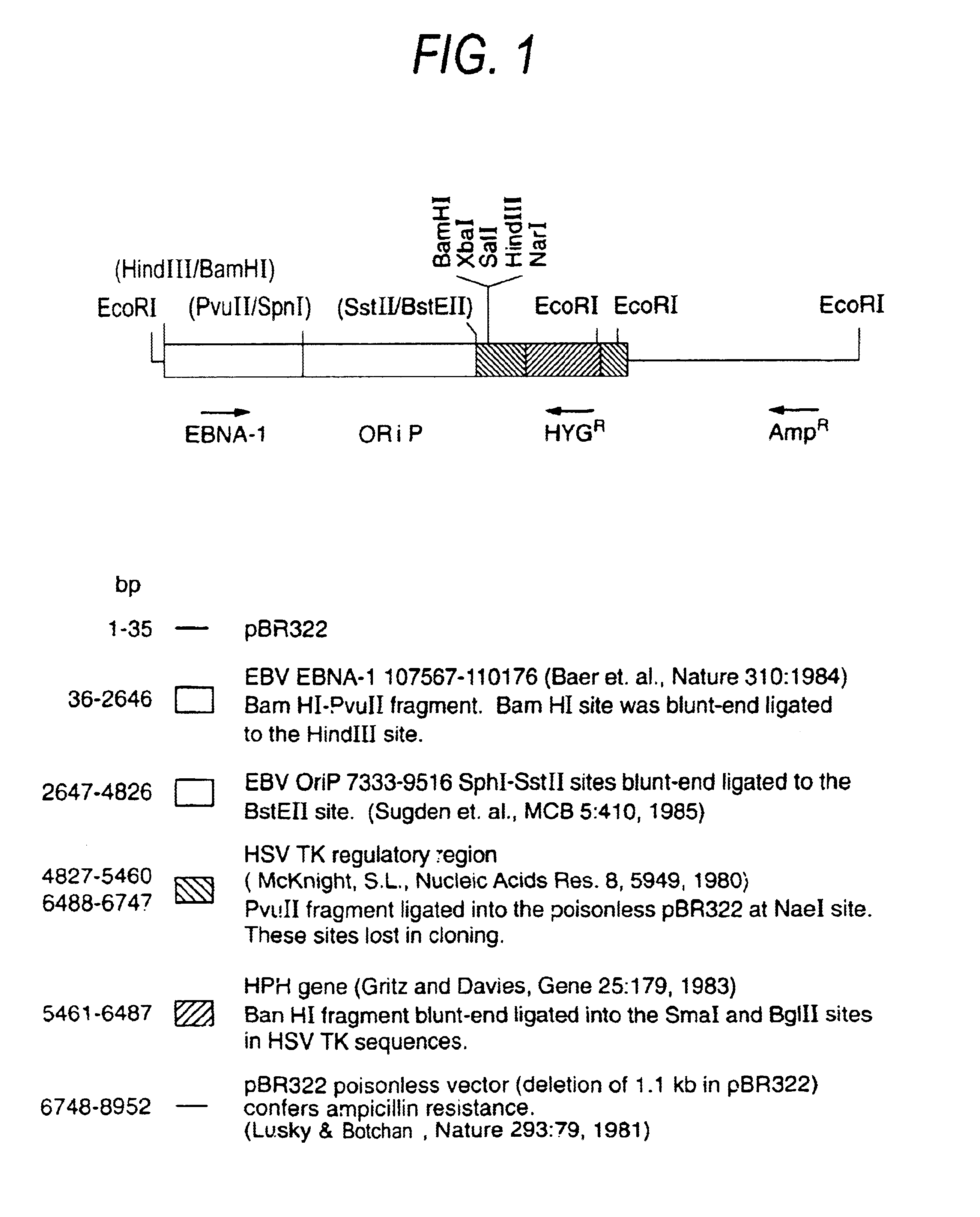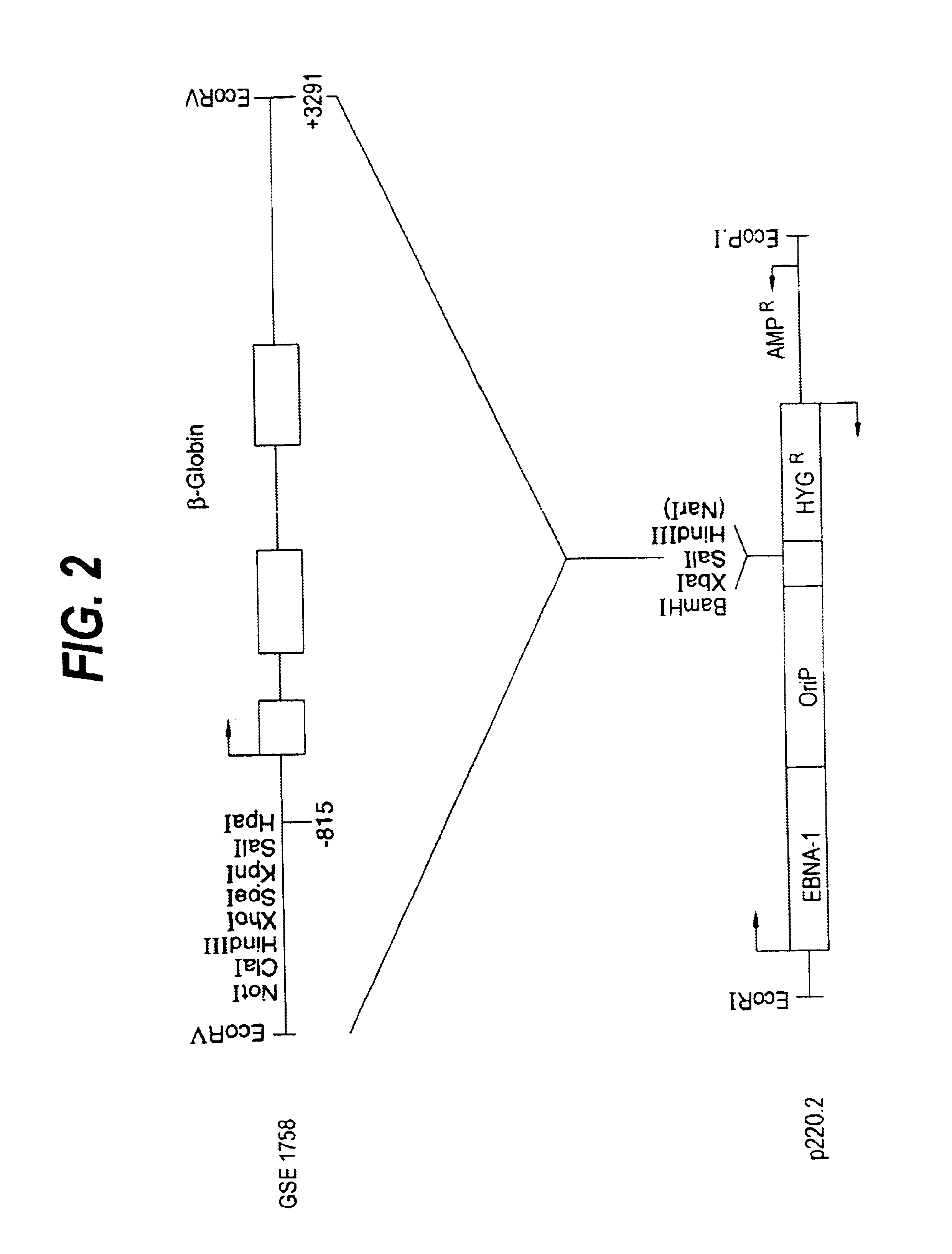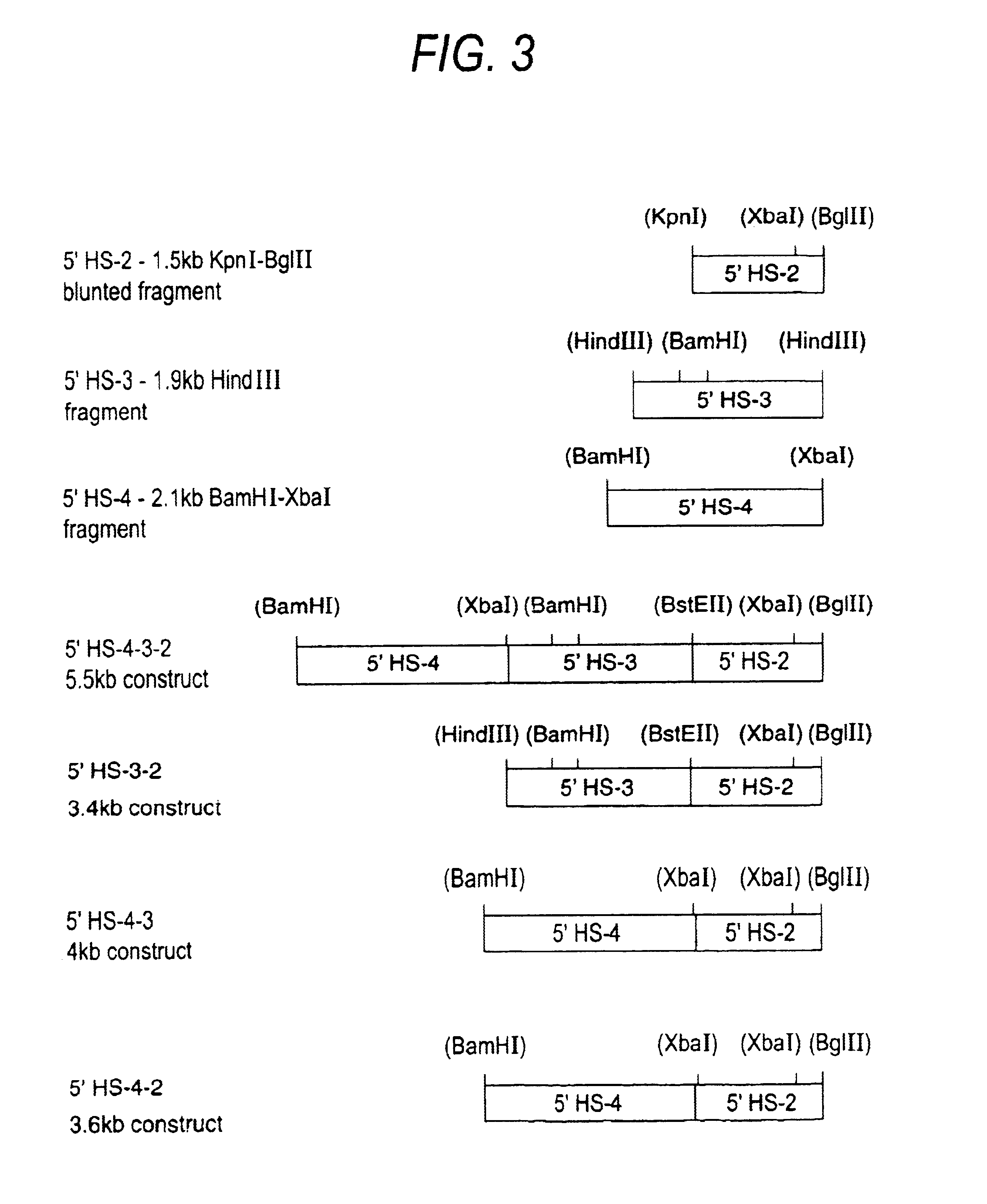Self-replicating episomal expression vectors conferring tissue-specific gene expression
- Summary
- Abstract
- Description
- Claims
- Application Information
AI Technical Summary
Benefits of technology
Problems solved by technology
Method used
Image
Examples
example 2
Analysis of Stable Transfection of Tissue Culture Cells
EBV-based vectors are most stable as self-replicating episomes in primate or human cells. Therefore stable transfections of the .beta.-globin LCR test gene constructs were carried out in the human myelogenous leukemia cell line K562 (Lozzio and Lozzio, Blood 45:321-334(1975)). This cell line displays an embryonic (a) and foetal (.gamma.) pattern of globin gene expression (Anderson et al., Int. J. Cancer 23:143-147 (1979)) and has previously been successfully used to assess .beta.-globin LCR function (Blom van Assendelft et al., Cell 56:969-977 (1989)).
1. Transfection Method
K562 cells (10.sup.7) were transfected by electroporation with 50 .mu.g of supercoiled test construct DNA using a Bio Rad Gene Pulser (BioRad, Hercules, Calif.) set at 960 .mu.F and 300 V as described in Antoniou, 1991. Each electroporated sample was divided equally between two 75 cm.sup.2 tissue culture flasks in order to generate two independent pools of sta...
example 3
1. Expression Analysis of .beta.-globin Reported Gene Constructs
FIG. 4 (upper panel) shows the autoradiogram from the analysis of RNA by an S1-nuclease protection assay for the expression of the transfected gene constructs. The sites were linked to the .beta.-globin gene in the EBV-based self-replicating episomal expression vector p220.2 and stably transfected into K562 cells. Total RNA was analyzed by an S1-nuclease protection assay using a mixture of probes to simultaneously detect both the .beta.-globin 5' mRNA from the transgene and the endogenously expressed .gamma.-globin MRNA (3'.gamma.) which acts as an internal reference. Quantitation of the results in FIG. 4 was by Phosphorimager (Molecular Dynamics) and is summarized in Table 1.
In this experiment, little or no expression was seen with the .beta.-globin gene alone (no LCR component present in the self-replicating episomal vector) (lane .beta.1). A vector containing either HS2 or HS4 improved expression only by a small degr...
example 4
The human .beta.-globin gene either alone (.beta.) or under the control of .beta.LCR HS2 (2.beta.), HS3 (3.beta.) and HS2, 3 and 4 (5.beta.) in the EBV-based, self-replicating episomal vector p220.2 (see FIGS. 2 and 3), were stably transfected into K562 (Panel A) and HeLa (Panel B) cells by electroporation (see text). Supercoiled plasmid DNA (50 .mu.g) was mixed with 2.times.10.sup.7 cells and electroporated with the Bio Rad Gene Pulser set to deliver a single pulse of 960 .mu.F at 300V. Stably transfected cells were selected with 250 .mu.g hygromycin. Total RNA was extracted from the stably transfected pools that were generated and analysed for transgene expression by an S1-nuclease protection assay using end-labelled DNA probes. The .beta.-globin MRNA from the transfected gene was detected with the same 5' probe (5'.beta.) as shown in FIG. 4. Detection of .gamma.-globin mRNA with a 5' exon II probe giving a protected fragment of 207 nucleotides (5'.gamma.), acted as an internal re...
PUM
| Property | Measurement | Unit |
|---|---|---|
| Electrical resistance | aaaaa | aaaaa |
Abstract
Description
Claims
Application Information
 Login to view more
Login to view more - R&D Engineer
- R&D Manager
- IP Professional
- Industry Leading Data Capabilities
- Powerful AI technology
- Patent DNA Extraction
Browse by: Latest US Patents, China's latest patents, Technical Efficacy Thesaurus, Application Domain, Technology Topic.
© 2024 PatSnap. All rights reserved.Legal|Privacy policy|Modern Slavery Act Transparency Statement|Sitemap



